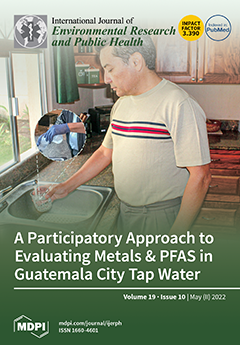Leachate and landfill gas are the main contaminants produced by modern sanitary landfills. The leachate easily leads to clogging in the leachate transportation pipe, and the landfill gas can be used as renewable energy after the removal of CO
2. The study aims to investigate the removal of the major scale forming ion of Ca
2+ in leachate using raw landfill gas before pipe transportation. The research demonstrated that, under the given experimental conditions, the removal rate of Ca
2+ in the leachate was positively correlated with the pH value of the leachate, and negatively correlated with the intake flow rate of the landfill gas; the highest removal rate of Ca
2+ was achieved when the intake flow rate and volume were 0.05 L/min and 2.0 L, respectively, and the highest removal rate of Ca
2+ from the leachate was about 90%. The maximum removal rate of CO
2 from landfill gas could reach 95%, and the CO
2 content of the post-reaction gas was as low as 1.74% (volume percentage). The scanning electron microscope (SEM) and X-ray diffraction (XRD) analysis showed that the precipitate was spherical and mainly contained inorganic substances such as CaCO
3, MgCO
3, Ca(OH)
2, Mg(OH)
2, and SiO
2. The study showed that, before the leachate was piped, the Ca
2+ could be removed using the raw landfill gas, thereby reducing the potential for the formation of precipitation clogging in the pipeline. This study also provides new ideas for upgrading landfill gas to achieve a renewable-energy utilization plan, and reduces greenhouse gas emissions by reducing CO
2 emissions from landfills.
Full article





